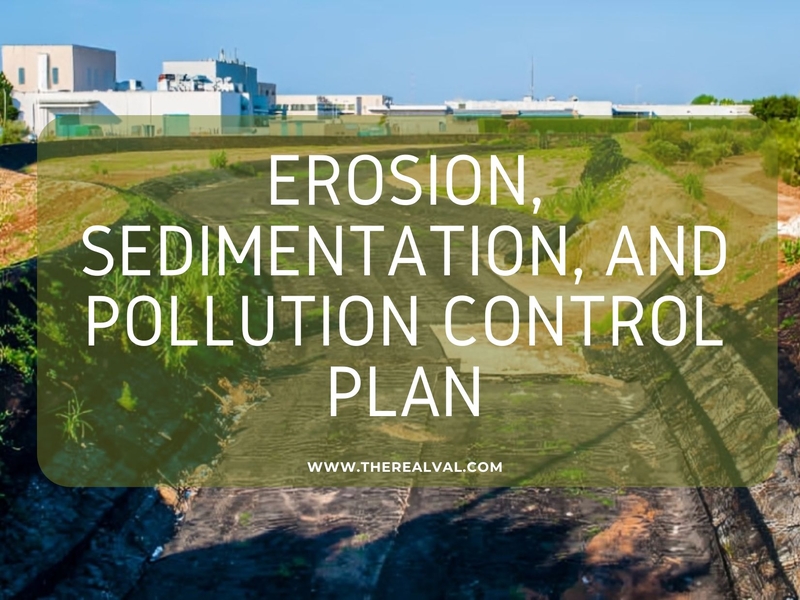An Erosion, Sedimentation, and Pollution Control Plan (ESPCP) is a crucial blueprint for keeping construction sites environmentally responsible. It lays out the steps needed to prevent soil erosion, control sediment runoff, and minimize pollution, ensuring projects don’t harm surrounding ecosystems.
What’s Included in an ESPCP?
- Erosion Control – Strategies to keep soil in place and prevent it from being displaced by wind, water, or construction work.
- Sedimentation Control – Techniques like silt fences, sediment basins, and vegetative buffers to manage runoff and stop sediment from reaching waterways.
- Pollution Prevention – Measures to limit pollutants such as chemicals, debris, and construction waste from contaminating nearby water bodies.
ESPCP is often required by regulatory agencies to ensure compliance with environmental laws like the Clean Water Act and National Pollutant Discharge Elimination System (NPDES) permits. Following these guidelines helps keep construction sustainable and environmentally safe.
Key Elements of an ESPCP-
An effective Erosion, Sedimentation, and Pollution Control Plan (ESPCP) should cover key aspects of site management to protect the environment and comply with regulations. Here’s what it should include:
- Timing of Works – Plan construction activities to reduce soil exposure during high-risk periods.
- Protective Ground Cover – Maintain vegetative or other protective cover wherever possible to prevent erosion.
- Access Protection Measures – Prevent sediment runoff and erosion at site entry and exit points.
- Earthworks Details – Provide specifics on excavation, grading, and fill volumes to manage land disturbance.
- Runoff Diversion – Redirect water flow around disturbed areas to minimize erosion risks.
- Stockpile Management – Properly place and safeguard stockpiles, including topsoil, to prevent erosion.
- Erosion & Sediment Control Measures – Identify the types and locations of silt fences, sediment basins, or other controls.
- Site Rehabilitation – Outline a plan for restoring disturbed areas, including timelines for stabilization.
- Maintenance Program – Specify how often erosion control measures will be inspected and maintained.
- Site-Specific Structures – Include any additional soil or water conservation structures tailored to the site.
Why is an ESPCP Important in Commercial Real Estate?
Commercial real estate projects often involve large-scale land development, which can lead to serious environmental challenges. An ESPCP isn’t just a regulatory checkbox- it’s a smart, proactive approach to sustainable development. Here’s why it’s essential:
- Ensures Regulatory Compliance: Laws like the Clean Water Act (CWA) and state regulations require developers to control erosion and sedimentation. Failing to comply can lead to hefty fines, project delays, or legal action. A well-prepared ESPCP keeps projects on track and within legal requirements.
- Protects the Environment: Construction can disrupt ecosystems, degrade water quality, and impact wildlife. An ESPCP reduces these risks by using best practices for soil stabilization, sediment containment, and pollution prevention.
- Boosts Reputation & Marketability: Sustainability is a major selling point in today’s real estate market. Developers who prioritize environmental responsibility can attract eco-conscious tenants, investors, and buyers, setting themselves apart from the competition.
- Prevents Costly Damages: Uncontrolled erosion can lead to soil loss, water contamination, and stormwater damage, resulting in expensive remediation. A solid ESPCP helps prevent these issues upfront, saving money in the long run.
- Supports Long-Term Property Value: Environmentally responsible developments tend to hold their value better. By ensuring the site remains stable, safe, and compliant, an ESPCP contributes to a more resilient and desirable property.
For commercial real estate developers, an ESPCP isn’t just about following the rules—it’s about building smarter, protecting investments, and creating long-term value.
The Impact of ESPCP on Commercial Real Estate Development-
Implementing an Erosion, Sedimentation, and Pollution Control Plan (ESPCP) has a significant impact on commercial real estate projects, influencing everything from site selection to long-term property management. Here’s how it plays a critical role:
- Smarter Site Selection & Planning: An ESPCP helps developers choose sites with minimal environmental sensitivity, reducing the risk of erosion and sedimentation issues. It also informs the project’s layout and design, ensuring sustainable land use from the start.
- Sustainable Construction Practices: An ESPCP mandates best practices that enhance both environmental protection and operational efficiency, including:
- Installing silt fences and sediment basins to control runoff
- Stabilizing exposed soil with vegetation or mulch
- Managing construction waste and hazardous materials properly
- Better Stormwater Management: Large impervious surfaces like parking lots and rooftops can lead to excessive stormwater runoff. An ESPCP includes strategies such as:
- Permeable paving to allow water absorption
- Rain gardens that filter runoff naturally
- Retention ponds to manage excess water
- Post-Construction Environmental Maintenance: An ESPCP isn’t just about construction—it also ensures long-term environmental compliance. Ongoing site maintenance helps prevent soil erosion, manage drainage, and sustain ecosystem balance in commercial properties.
- Stronger Tenant & Community Relations: Sustainability is a growing priority for businesses and communities. A well-executed ESPCP shows a commitment to environmental responsibility, leading to:
- Higher tenant satisfaction & occupancy rates
- Stronger investor interest
- Greater community support
Key Erosion Control Methods in Commercial Real Estate Development-
Effective erosion control is essential for maintaining site stability and preventing environmental damage. Some proven methods:
- Soil Stabilization: Techniques like mulching, hydroseeding, and soil binders help protect exposed soil surfaces, reducing the risk of erosion caused by wind and water.
- Sediment Traps & Basins: These structures capture sediment-laden runoff, allowing sediment to settle before water is discharged, preventing pollution of nearby water bodies.
- Runoff Diversion: Using channels and barriers to redirect stormwater away from disturbed areas helps prevent soil displacement and erosion.
- Slope Stabilization: Steep slopes are particularly vulnerable to erosion. Methods like terracing, retaining walls, and vegetation provide stability and reduce runoff impact.
- Stormwater Management: Features like detention ponds, permeable pavements, and rain gardens help manage stormwater runoff effectively, reducing erosion and improving water quality.
By integrating erosion and sediment control into project planning and execution, commercial real estate developers and managers can protect the environment, reduce risks, and enhance the value and sustainability of their properties.
Trending





